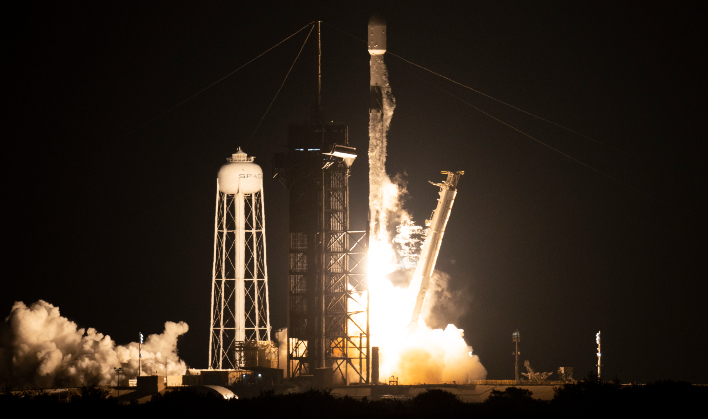Watch SpaceX Falcon 9 Rocket Launch NASA's X-Ray Telescope To Study Black Holes

It feels like NASA is sending new technology into space almost daily as of late. Just two days ago the space agency launched its newest communications satellite, the Laser Communications Relay Demonstration (LCRD), that will provide a link for communication for spacecraft that is not in direct line-of-sight with ground communications. Later this month NASA is hoping to launch its James Webb Space Telescope that will be the world's largest and most powerful space science observatory. NASA hopes to be able to answer fundamental questions about the universe and its origins with the data from the Webb Telescope.
Liftoff! pic.twitter.com/v9VAb8UITL
— SpaceX (@SpaceX) December 9, 2021
IXPE is the first observatory of its kind. It will not be as large as the Chandra X-ray Observatory, but what it lacks in imaging power is made up for by its ability to see aspects of cosmic X-ray sources and polarization that has mostly went unexplored up until now.
"IXPE represents another extraordinary first. Together with our partners in Italy and around the world, we've added a new space observatory to our fleet that will shape our understanding of the universe for years to come," said Thomas Zurbuchen, associate administrator for the Science Mission Directorate at NASSA Headquarters in Washington. "Each NASA spacecraft is carefully chosen to target brand new observations enabling science, and IXPE is going to show us the violent universe around us, such as exploding stars and the black holes at the center of galaxies, in ways we've never been able to see it."
Polarized light contains unique details about its origin and what it passes through. Light is made up of interconnected waves of electric and magnetic fields that interact with each other in such a way that makes them vibrate, or oscillate, at 90-degree angles to the path the light is traveling. For example, a standard light bulb produces electric fields that vibrate every which way. If light is scattered or reflected by particles or surfaces, the light can become polarized, with vibrations coordinated in one direction.
IXPE will seek to analyze polarized X-rays so that scientists can learn more about the structure and behavior of celestial objects, the physics of how those X-rays come into existence, and their surrounding environments. The space observatory's polarization experiments will also hold tidbits of data to questions astronomers have pondered about for decades. Those are things like: What are the spins of black holes? What powers the mysterious illumination of pulsars, spinning dead stars so dense that a spoonful would weigh as much as a mountain on Earth? Does our understanding of the fundamental laws of physics hold up throughout the entire universe?
The ability of IXPE's powerful X-ray vision is made possible by state-of-art polarization detectors developed in Italy. The observatory carries three identical telescopes, each having its own set of nested cylinder-shaped mirrors that collect X-rays and feed them into a detector. That detector then takes a picture of incoming X-rays and measures both the amount of and direction of polarization.
Dr. Martin Weisskopf, IXPE's principal investigator said, "IXPE will help us test and refine our theories of how the universe works. There may be even more exciting answers ahead than the ones we've hypothesized. Better yet, we may find whole lists of new questions to ask."
NASA is certainly positioning itself to answer many questions scientists, astronomers and everyone else has had for many years. With each new launch of technology, the agency adds another means of gathering new data that can be used to look at our universe and beyond in ways never before possible. Whether that data answers existing questions, or adds new ones to the fold will only be known with time.

